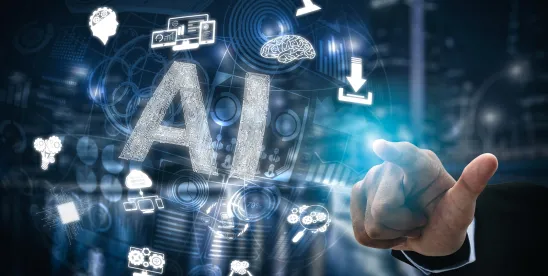As we near the end of 2024, generative artificial intelligence (genAI) continues to shape the legal profession. These ten trends highlight how lawyers' adoption rates, genAI usage, and risk assessments have evolved over the past year.
- Widespread Adoption and Uneven Distribution
A September 2024 study by Everlaw reveals a significant increase in AI usage among lawyers, jumping from 23% to 34% since 2023. This uptick indicates a growing recognition of AI's potential to enhance legal work. However, the adoption rate tells only part of the story. An earlier survey conducted by Ironclad presents a more nuanced view, suggesting that the future of AI in law may not be evenly distributed. The study found that a staggering 90% of General Counsels (GCs) and 70% of attorneys in large firms are already utilizing genAI. This disparity hints at a potential divide between different sectors of the legal profession, with larger organizations and in-house legal departments leading the charge in AI adoption and smaller firms lagging behind to the detriment of their clients.
- Gender Disparity in AI Usage
Another troubling trend in genAI adoption across all industries, including legal, is gender disparity. Recent data indicates that 64% of male lawyers are using genAI, compared to only 40% of their female counterparts. The reasons for the gender gap are unknown but problematic since women – who juggle most family responsibilities – would benefit most from AI’s efficiencies.
- Easing Copyright Concerns
One of the most notable shifts in the past year has been the changing perception of copyright risks associated with AI use. The initial chilling effect that copyright concerns had on many lawyers has largely dissipated. This change can be attributed to two key factors: first, AI end-users (in contrast to AI platforms) are not being targeted in lawsuits, and second, many AI platforms have stepped up to offer legal fee coverage in the event of litigation. This reduced risk has emboldened more lawyers to explore and integrate AI tools into their practice.
- Proliferation of Specialized AI Tools
The legal tech market is witnessing an explosion of new genAI tools, with innovations emerging almost daily. These tools are increasingly tailored to specific practice areas or designed to tackle particular legal tasks. The trend towards specialization is accompanied by significant improvements in capabilities and confidentiality allowing for more nuanced, accurate and ethical AI assistance in legal work.
- Ethical Guidance and Professional Standards
As AI becomes more prevalent in legal practice, legal regulators are stepping up to provide much-needed guidance. The American Bar Association (ABA) and at least eight state bar associations have issued ethics opinions like ABA Formal Opinion 512 or informal guidance on the use of AI in legal practice. These guidelines help lawyers navigate the ethical implications of AI use and are likely to encourage more widespread adoption by replacing regulatory uncertainty with a clearer framework for responsible implementation.
- Judicial Responses and Disclosure Requirements
The courts are also adapting to the AI revolution. In the wake of widely-reported hallucinations in AI-generated court filings, individual judges have taken proactive steps by issuing standing orders that require disclosure of AI use in court submissions. These orders often mandate certification that all AI-generated content and sources have been thoroughly verified. This trend reflects the legal system's attempt to maintain transparency and integrity in the face of rapidly evolving technology.
However, the approach to AI in courtrooms is not uniform across jurisdictions. Notably, the Fifth Circuit Court of Appeals declined to adopt a circuit-wide rule requiring AI disclosure after facing strong opposition to its initial proposal. The court agreed that existing court rules that require lawyers to certify the accuracy of court filings were sufficient to encompass AI. The court further cautioned that “I used AI” would not serve as an excuse for otherwise sanctionable conduct. As AI improves in accuracy, expect more courts to follow the Fifth Circuit’s approach rather than single out AI for heightened verification requirements.
- Shifting Narratives: From Replacement to Collaboration
Perhaps one of the most significant shifts over the past year is the change in the narrative surrounding AI in the legal profession. The conversation has evolved from fears of AI replacing lawyers to a more nuanced discussion of how AI can collaborate with and enhance the capabilities of legal professionals. This shift represents a growing understanding of AI as a powerful tool that can augment human expertise rather than supplant it.
- Emerging Challenges: Deepfakes and AI-Generated Content
As AI technology advances, new challenges are emerging that require the legal profession's attention. The increasing sophistication of deepfake technology in voice, images, and video presents novel issues for courts and lawyers who must authenticate each of these sources. Moreover, it is likely that courts will impose a duty on lawyers to certify that materials obtained from clients are authentic and not produced by AI to ensure the integrity of the legal system.
- Risks of Using AI Versus Not Using AI
When ChatGPT first launched in 2022, most lawyers determined that the risks of hallucinations or breach of client confidentiality outweighed any marginal benefits. But now, with so many sophisticated AI tools specific for legal practice on the market, lawyers must now assess the risk of being left behind their competitors or even committing malpractice if they do not employ AI in their practices.
- Beyond Basic Tasks: AI for Strategic Legal Thinking
Contrary to early expectations, lawyers are not limiting their use of AI to mass produce push-button marketing content or legal briefs. Instead, many are leveraging AI to develop richer, more sophisticated arguments and strategies for their clients. This advanced application of AI demonstrates its potential to enhance the quality and depth of legal analysis, potentially leading to more innovative and effective legal solutions.
During the coming year, the legal profession will continue to integrate AI at a rapid pace, bringing with it a host of opportunities and challenges. From addressing gender disparities in adoption to navigating ethical considerations and leveraging AI for strategic thinking, the legal community must act with vigilance to ensure that AI is used responsibly to improve the quality of service that lawyers provide to their clients while making lawyers’ lives easier.




 />i
/>i
